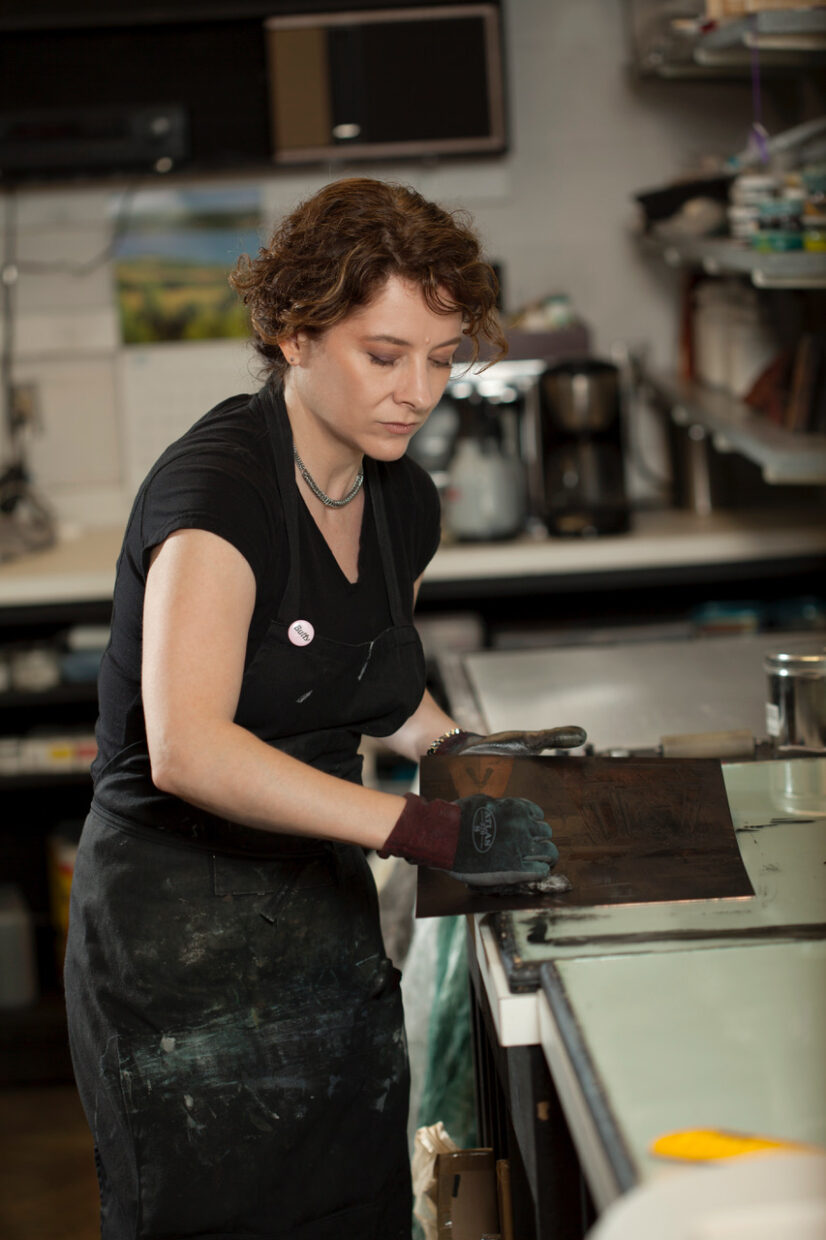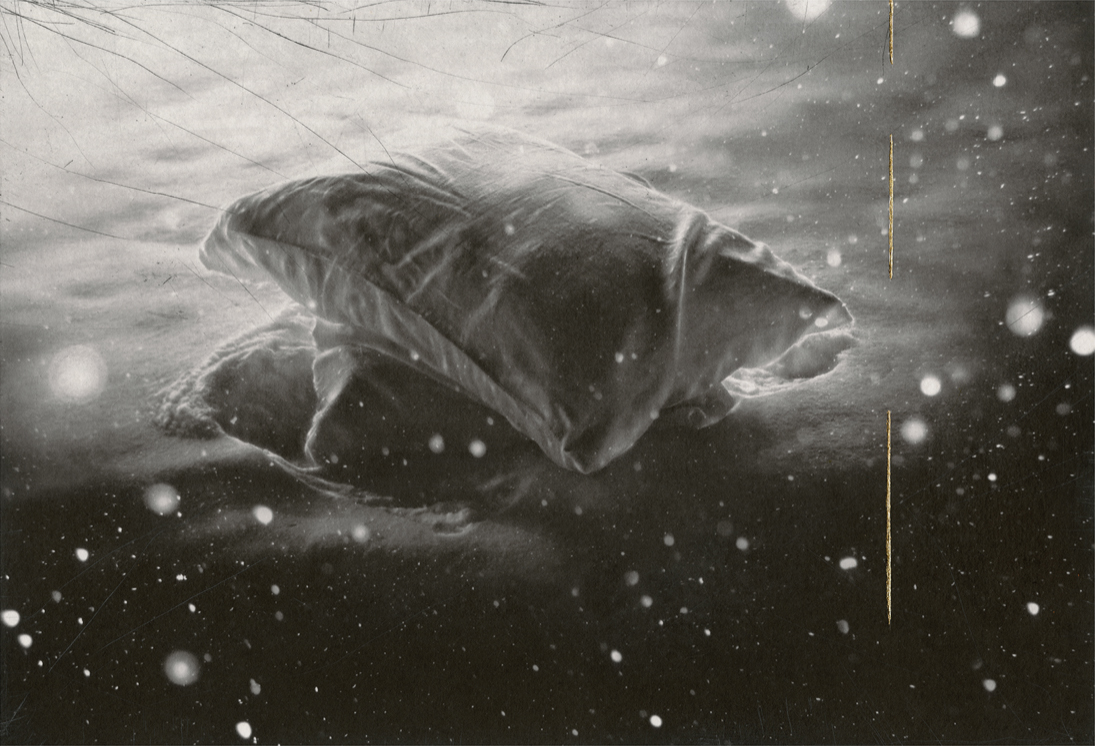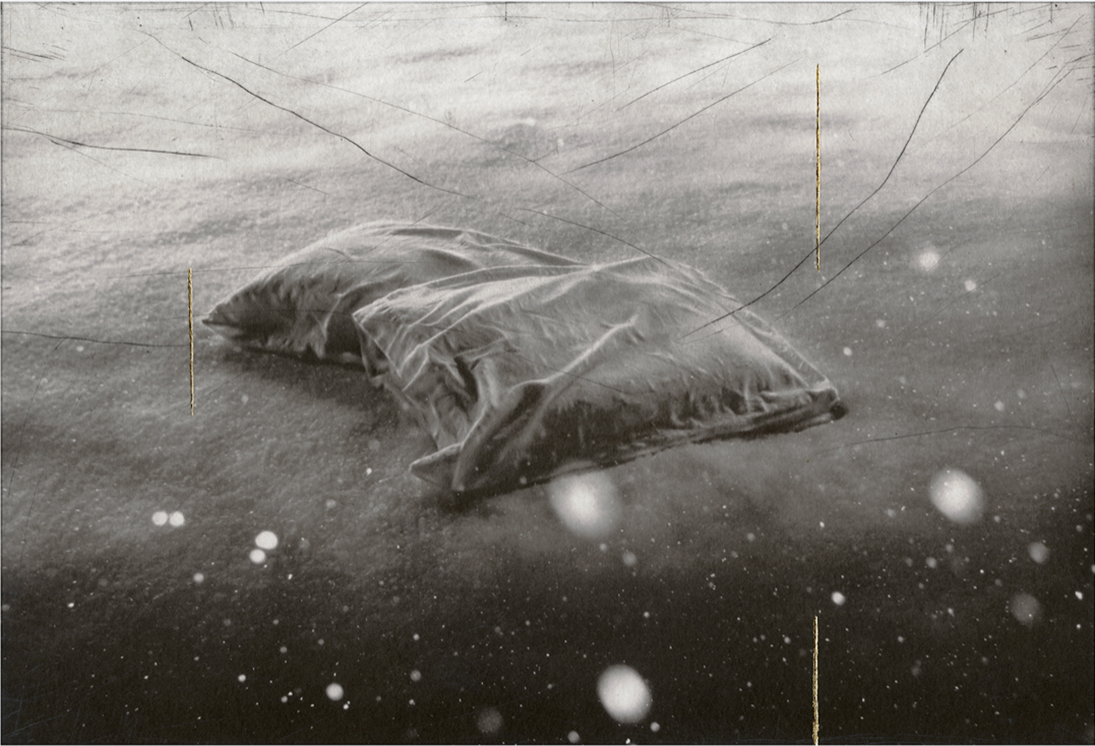

9月18日(月)〜23日(土)の1週間、訪問教授プログラムとしてインディアナ大学(アメリカ)のTracy Templeton先生を招聘し、ワークショップや指導、講義を行っていただきます。
プログラム開催にあたり、Tracy Templeton先生に質問を行い、その回答を送っていただきましたので掲載いたします。また、Tracy Templeton先生を紹介するインディアナ大学のサイトへのリンクや、作品画像も併せて掲載いたします。
インディアナ大学HPリンク:
https://eskenazi.indiana.edu/faculty/directory/templeton-tracy.html
Q1.Please tell us your thoughts on the relationship between prints and photography.
Over the past sixty years, artists working within the complex confluence of photography and printmaking have left an indelible imprint on the evolution of printmaking media. The integration of photographic images into printmaking and classification of the subsequent hybrid under the umbrella of printmaking—more commonly associated with traditional hand-worked techniques—have begged expansion into new frontiers. Pushing against the constraints imposed by conventional divisions of photography and printmaking practices as well as the trepidation expounded by some peers, jurors, curators, and critics entrenched in tradition, pioneers of this practice only strengthened their resolve. Seminal works merging photographic printmaking processes were produced in this atmosphere of both apprehension and experimentation, yielding a new visual language that has not only endured but inspired countless other artists. Photo-mechanical printmaking brings the essence of historical graphic traditions into conversation with contemporary theory and critical thinking in visual culture.
Q2. Please tell us your thoughts on the future possibilities of print art.
I have been fortunate to have worked with artists for which hybridity—before it was known as such—was a natural extension of printmaking. It has been continually reinvented in response to both new and waning technologies—from Xerox to risograph to letterpress—breathing fresh life into discarded forms of communication technologies in fine art contexts. In a time when it could be argued that technologies are dividing us, printmaking fosters community, encouraging collaborations between contemporary artists across geographical and conceptual borders alike. We all bring a diversity and breadth to the field, connected by a visual language, not necessarily focused on technique but idea. We continue to expand the peripheries of printmaking, and the visual vernacular continues to have a critical impact on the evolution of all print-media as trans media explores new concepts.
Contextualizing technologies for the desired outcome is a crucial skill for a generation engrossed in the digital. The interplay between and diverse variations of technical integration are evidence of an evolving medium, illustrating its health, adaptability, and receptivity. One of the most sustainable forms of artmaking for bridging technologies, printmaking continues to advance and inspire artists as it has for centuries. By alternating between low-and high-tech, traditional and vanguard, students learn to appreciate the dimensionality of their methodology through exploration and invention.


